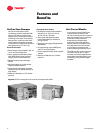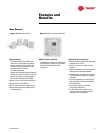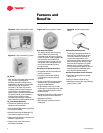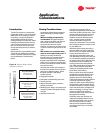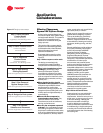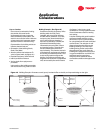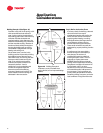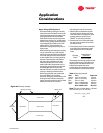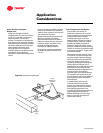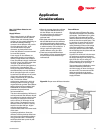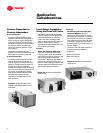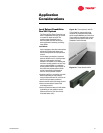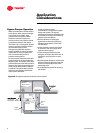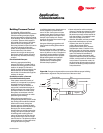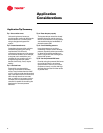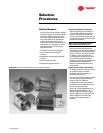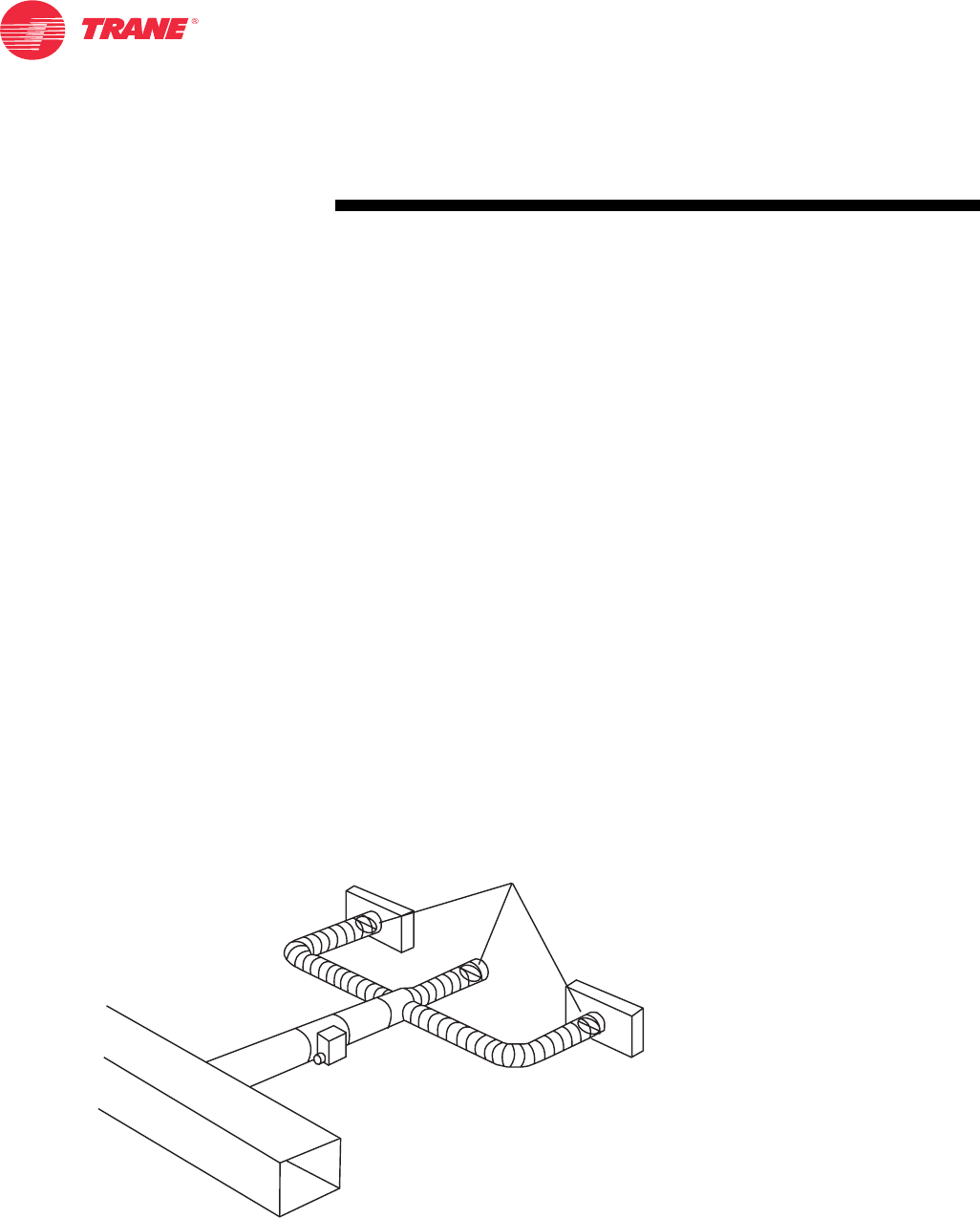
18 VAV-PRC003-EN
Application
Considerations
Step 5. Size Zone and Bypass
Damper Units
Sizing zone damper is relatively
straightforward. The volume of airflow
(in cfm or L/s) for each comfort zone
should be known from the load
analysis. The designer must select the
duct velocity to be used for the system.
Recommended zone damper velocities
are 1000 to 1600 feet per minute (fpm)
when applied at the branch level.
Sizing dampers in this range will
minimize damper cost, reduce the risk
of excessive noise, and ensure
adequate zone modulation/temperature
control.
Dampers located immediately adjacent
to the zone or diffuser may need to be
sized at a lower velocity to avoid sound
and airflow delivery issues.
Bypass dampers are typically sized for
80 percent of HVAC unit airflow.
Recommended velocities are 1600 to
2000 fpm. Bypass dampers should be
located as close to the HVAC unit as
possible. (See Bypass Damper
Operation for additional details.)
Note: VariTrac systems are designed
for HVAC unit static pressures up to
1.75" w.c.
Step 6. Designing the Duct System
Low pressure, low velocity air
distribution systems, such as zoned
unitary systems, are usually designed
using the equal friction method.
Although static regain is the duct
design method of choice for medium
and high velocity variable air volume
systems, the added complexity is
difficult to justify with smaller unitary
systems. In addition, the low operating
velocity of most unitary systems makes
the pressure available to “regain”, small
and inconsequential.
With the equal friction method, ducts
are sized for a constant pressure loss
per given length of duct and fitting(s).
Where low noise levels are especially
critical, the system velocity can be
reduced by enlarging the entering and
leaving ductwork, damper unit or
adding duct liner. A characteristic of the
equal friction method that must be
considered however, is that there is no
natural provision for equalizing
pressure drops in the branch sections.
This results in each branch duct, and
thus the damper units, having different
entering static pressure and airflow
characteristics.
A robust system and zone unit
controller, like the Trane VariTrac
system, will compensate for system
static changes. The use of manual (or
hand) balancing dampers in the
branches will also ensure that airflow is
appropriately distributed to each
diffuser. (See Figure 21.) The overall
effect is improved acoustical and
system performance.
Figure 21. Hand balancing dampers
Hand
Balancing
Damper
VariTrac
Damper
Supply
Duct



